Senior US Commander Visits UAE After Houthi Missile Attacks
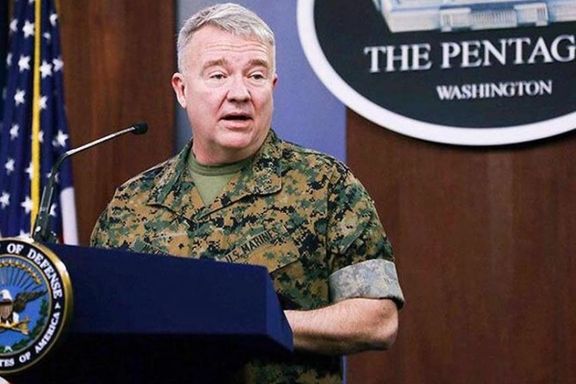
US Middle East Commander General Frank McKenzie arrived in the United Arab Emirates Sunday for talks to bolster the Gulf state's defenses after missile attacks by Houthi fighters in Yemen.

US Middle East Commander General Frank McKenzie arrived in the United Arab Emirates Sunday for talks to bolster the Gulf state's defenses after missile attacks by Houthi fighters in Yemen.
In recent weeks, the Iran-backed Houthis have waged an unprecedented string of largely failed missiles strikes on UAE targets that have triggered Emirati and US air defenses and seen American troops briefly taking shelter.
McKenzie, who is head of Central Command, said he moved up his planned visit in response to the Houthi attacks, hoping to underscore the US commitment to UAE’s defense.
"I think it's a very worrisome time for UAE. They're looking for support. We're here to help them to provide that support," McKenzie told reporters.
The Pentagon has announced a US deployment of advanced F-22 fighter jets and a guided missile destroyer, the USS Cole, to partner with the UAE navy ahead of a port call in Abu Dhabi.
McKenzie said the F-22s would provide the UAE with "one of the best look-down radars in the world," capable of identifying targets including land attack cruise missiles and drones.
Washington accuses Tehran of supplying high-end weaponry to the Houthis.
"Medium range ballistic missiles that were fired from Yemen and entered UAE were not invented, built, designed in Yemen," McKenzie said. "All that happened somewhere else. So, I think we certainly see the Iranian connection to this."
Reporting by Reuters
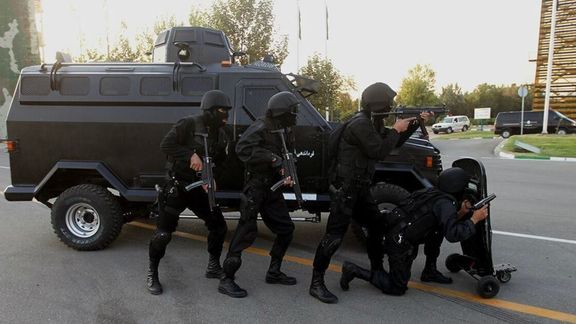
Iran’s police have distributed thousands of new cars, anti-riot “tactical vehicles”, motorcycles and boats to units, costing tens of millions of dollars.
The commander of the police, General Hossein Ashtari, a senior Revolutionary Guard officer, said Sunday that 1,800 cars, 700 motorcycles, 250 “tactical vehicles” and 85 boats were procured and distributed.
Fars news that published the report gave no details about the kind of cars purchased by the police, but Iran uses a mix of domestically assembled cars as well as imported models, such as Toyota SUVs and Mercedes cars in the past. But 1,800 cars alone would cost tens of millions of dollars.
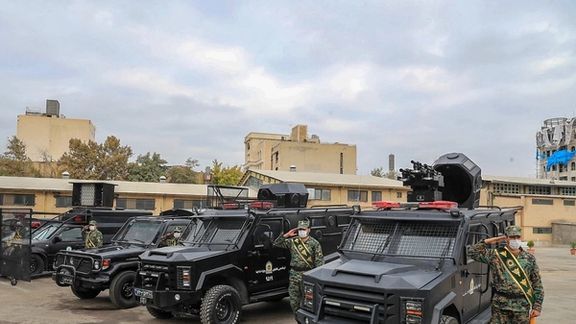
Motorcycles are mainly used to disperse protesters when special anti-riot personnel, two per motorcycle, show up in groups of 20 or more and drive toward small or large crowds. The men sitting in the back use sticks or even chains to attack civilians.
Tactical vehicles are a variety of heavy, armored semi-trucks and trucks, designed to confront and disperse protesters. They are assembled in Iran, but engines and other parts are imported. Some are used as powerful water trucks and others have special devices to fire tear gas.

The special anti-riot forces have been instrumental in the past to stop nationwide protests. Civilians have no way to protect themselves against swarming motorcycles or armored vehicles, while often these forces have permission to open fire on protesters.
In November 2019, a variety of forces were used to put down nationwide protests, including armed vigilante-type groups, riot police and according to some accounts, even Iraqi and Afghan militiamen. As a result, hundreds were killed in the streets. Reuters put the figure at 1,500, while Amnesty International has conformed 304 deaths.

The news of the large procurements comes as the Islamic Republic leadership call for more support for the police after an officer was stabbed to death by an alleged criminal this week. Iran’s parliament has vowed to relax current laws on use of firearms by the police, although during protests security forces have felt to inhibition on opening fire on civilians.
Police chief Ashtari presented the news of procurements as giving more mobility to security forces that are under the umbrella of the armed forces, with the leadership of the Revolutionary Guard, IRGC. He said the move will strengthen security on borders and for ordinary people.
He called on political leaders to support police requests for more support in next year’s budget. Already this year, security forces have received several raises amid high double-digit inflation, while other government employees receive half of what is needed for minimum expenses, estimated to be more than $400 a month for a family of 3.3.
Teachers and even court workers and prison guards have been protesting for pay raises to partially redress the impact of inflation that has seen food prices rise by 60 percent in the past year.

An officer of Iran’s Revolutionary Guards says about 850 people were killed in two provinces alone in the first two days of the bloody November 2019 protests.
During the Sunday session of the Iran Atrocities Tribunal, underway behind closed doors in London, “witness 600”, who identified himself as a former senior IRGC officer, claimed that 427 people were killed in Khuzestan province and 420 in Tehran during the crackdown, adding that about 8,000 people were also arrested in the capital.
Earlier estimates ranged from 300-1,500 civilians killed nationwide. The new figure offered by the witness would mean that overall death toll was much higher.
“We were losing Tehran and Vahid Haghanian (supreme leader’s chief personal aide) from Khamenei's office ordered us to do whatever is necessary to end the chaos”, he said. Reuters had reported in December 2019 that the order to end protests at any cost had come from Khamenei.
He added that Basij paramilitary forces were also allowed to fire directly at people, noting they “fired the most and killed the most".
He said this crackdown was the only case in which military forces were not required to report on how many times or where they fired.
The tribunal − also known as Aban Tribunal after the Iranian calendar month of Aban − was established on the first anniversary of the 2019 protests by several human rights groups.
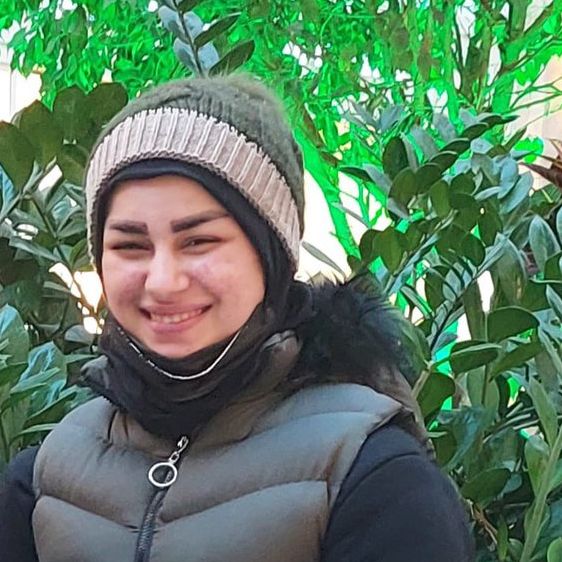
In another case of 'honor killing' in Iran, an unnamed young man has beheaded his 17-year-old wife, Mona Heydari, and displayed her head around the streets.
The murder happened in the southwestern city of Ahvaz on Saturday when the young wife was brought back from Turkey, where she had traveled for unknown reasons.
Her father helped the husband, who is his nephew, to bring the woman back to the country.
The husband and his brother, who apparently committed the murder together have been arrested.
Iran's media watchdog responded quickly and banned Rokna news agency that first released the footage of the killer carrying her wife’s head.
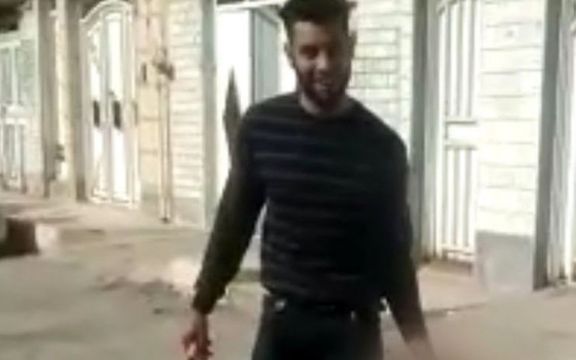
Honor killings are prevalent in some parts of Iran, mostly due to societal beliefs and the Islamic Republic’s lax laws and light sentences that encourage the behavior.
Article 630 of the Constitution exempts a husband from punishment if he kills if he witnesses adultery.
According to a women’s right NGO in Ahvaz, about 60 women have fallen victim to honor killings in the past two years, including some who were 10 or 15 years old. None of the perpetrators have been brought to justice as most of the families haven’t even filed a lawsuit.
The medical journal the Lancet published an article in October 2020, saying at least 8,000 honor killings took place in Iran between 2010 and 2014, but only a few were reported.
According to Sharia law, only the “blood owners” (the immediate family members) are allowed to demand execution for the murder of their loved one, therefore most honor killings go unpunished since families do not demand heavy punishment for another family member.
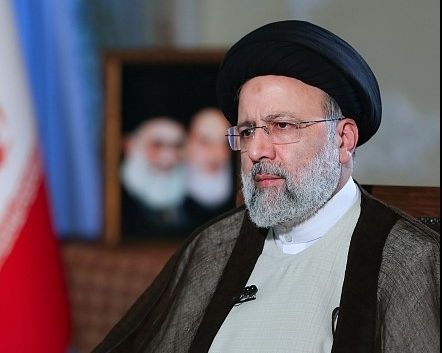
Iran is ready for more talks with Saudi Arabia if Riyadh is willing to hold the talks in an atmosphere of mutual understanding and respect, the semi-official news agency Fars quoted Iranian President Ebrahim Raisi as saying on Saturday.
Regional rivals Iran and Saudi Arabia, which severed diplomatic ties in 2016, launched direct talks hosted by Iraq last year at a time when global powers are trying to salvage a 2015 nuclear pact with Tehran, and as U.N.-led efforts to end a war in Yemen stall.
"Iran is ready to continue these negotiations until reaching an outcome, provided that the Saudis are willing to continue the negotiations in an atmosphere of mutual understanding and respect," Fars quoted Raisi as saying in a phone call with Iraqi Prime Minister Mustafa al-Kadhimi.
Iran had said earlier that its meetings with Saudi Arabia had been positive and had not complained about Riyadh’s attitude.
Saudi Arabia has described the talks as cordial but exploratory, while Tehran says they had gone a "good distance".
Recent missile and drone attacks by Iran-backed Houthis on targets in the United Arab Emirates might have affected the chances of more talks between Riyadh and Tehran.
With reporting by Reuters
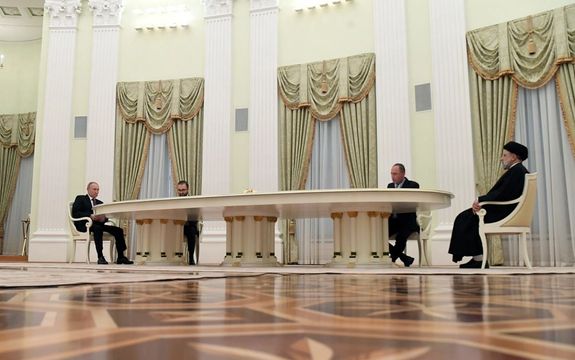
Vladimir Putin’s warm reception of the Argentinian president recently was in stark contrast to the way Kremlin treated Iran's president, many Iranians say.
Photos and videos emerged Thursday of Alberto Fernandez being warmly embraced by Putin, who sat very close to the Argentinian president in contrast to his greeting Raisi, a cleric, from a distance before the two men sat at opposite ends of a long table. This led to social-media comments claiming confirmation that Putin had not shown the respect due to the Iranian president.
Critics widely shared photos and videos of the two meetings alongside each other on various social media platforms on Friday and commented that they proved earlier claims that Putin had not shown due respect to the Iranian President.
Morteza Kazemian, journalist, told Iran International TV Friday that Putin’s reception of Fernandez proved that Raisi's treatment had been “out of the ordinary.” Clearly this showed the Russian president considered Raisi "a second-rate official” and "an executive officer" of Iran's Supreme Leader Ali Khamenei, Kazemian opined.
The Putin-Raisi January 21 meeting fed speculation over the table’s placement – for some as an intentional act to imply "distance" – over Putin apparently chewing gum, and over the absence of the two countries’ flags in the hall. A video released by Russian media after the visit apparently showed Raisi leaving the Kremlin without being seen off by Russian officials.
A conservative journalist, Mohammad Mohahjeri, called for Foreign Minister Hossein Amir-Abdollahian's resignation for failing to ensure that diplomatic protocols had been observed. The arrangements were "disgraceful," he said.
Various officials, government media, politicians, and Friday imams disagreed, insisting that Raisi had been respectfully received. They praised Raisi for praying in the Kremlin, a building seen for decades under Communism as the bastion of world atheism, and rejected criticism of Raisi’s government's efforts to expand relations with Russia and China in the face of continuing US ‘maximum pressure’ sanctions.
Some argued that Putin had kept a ‘social distance’ because Raisi had refused to abide by Covid protocols required by the Kremlin, including vaccination with the Russian Sputnik V vaccine and being tested before the meeting. They also said this was a "working visit" which did not require the ceremonial display of flags.
Fars news agency said the whole show, including the placement of the table, conformed with diplomatic protocols and suggested that Putin had been so impressed with the Iranian president that he fidgeted with his tie.